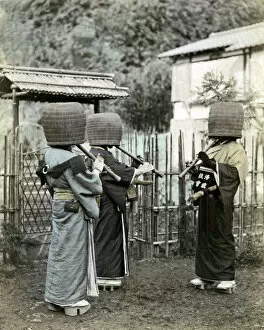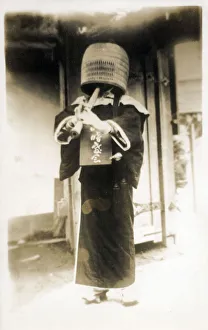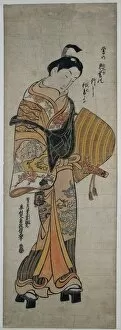Komuso Collection
Komuso monks of the Fuke sect, renowned for their basket hats and haunting shakuhachi flute melodies, are depicted in various artworks throughout Japanese history
All Professionally Made to Order for Quick Shipping
Komuso monks of the Fuke sect, renowned for their basket hats and haunting shakuhachi flute melodies, are depicted in various artworks throughout Japanese history. This image from 1928 captures a monk in Kobe, Japan, lost in musical contemplation. The Komuso monk's unique attire and flute-playing were popularized in the Edo period, as seen in the Kabuki play "Fashionable Pleasures" from 1715. A young man dressed as a Komuso monk is also depicted in a fourth-month Uzuki title object, showcasing the monks' role in customs and poetry. Three young women masquerading as Komuso strolling minstrels are captured in a print by Isoda Koryusai, further illustrating the cultural significance of these monks in Japanese art and society.
















